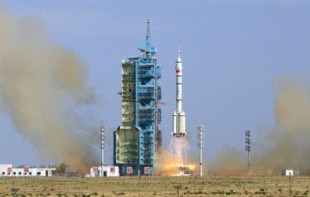Combining quantum physics with gravity is one of the ultimate challenges in physics, but the energies needed to test the various competing theories of quantum gravity are far beyond the scope of existing accelerator technology. A group of theoretical physicists from Oxford, Neuchâtel, Geneva and Athens has now suggested an alternative way to probe quantum gravity based on gamma-ray bursts. These short-lived flashes of gamma-radiation are among the most energetic phenomena in the Universe. They propose that an energy-dependent dispersion predicted by some theories of quantum gravity could manifest itself in the arrival time of photons from a gamma-ray burst (Nature 393 763). According to their calculations, existing gamma-ray satellites should be able to detect this effect.
Gamma-ray bursts appear to be related to the deaths of massive stars. Amelino-Camelia and colleagues claim that if the difference in the arrival times of photons with different energies can be measured, they will be able to test various theories of quantum gravity. This is because some of the theories treat the vacuum as a region in which particles with different energies travel at different velocities.
In these theories the vacuum is treated as an ‘energy foam’ in which microscopic quantum energy fluctuations occur on approximately the Planck length (10-33 cm) and time (10-19 GeV). As photons pass through the vacuum, they deform and excite these fluctuations and this, in turn, reduces the photon’s velocity. The higher the energy of the photon, the greater the effect. Therefore, because of the vast distances travelled by the photons from gamma-ray bursts, the difference in arrival times could be on the scale of milliseconds, which is well inside the capabilities of present gamma-ray observatories.



